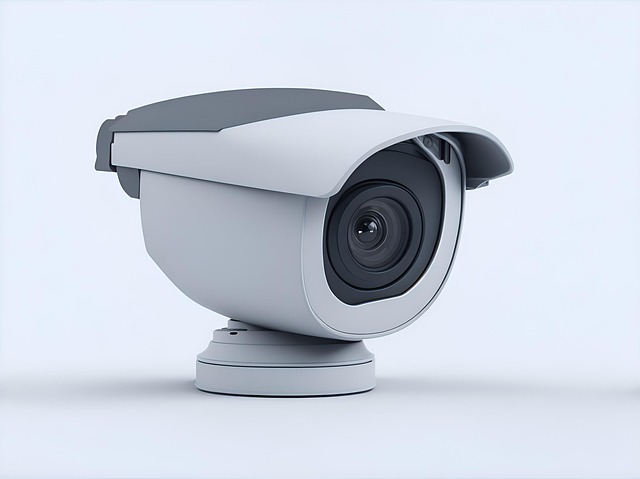Live-streaming technology has transformed remote access to content, especially in business security camera installations. It enhances security and operational transparency by enabling global transmission of real-time video feeds, facilitating efficient crisis management and proactive safety protocols. Advanced systems deter theft and vandalism, provide detailed analytics for performance optimization, and boost profitability. Implementing live-streaming requires careful consideration of technical aspects like bandwidth and streaming protocols, as well as robust security measures to protect video feeds and restrict access to authorized personnel.
In today’s digital era, live-streaming capabilities offer unprecedented remote access opportunities. This article explores how understanding and leveraging live-streaming can enhance business operations through effective business security camera installation. We delve into the technical aspects crucial for seamless streaming, while also highlighting best practices for secure remote monitoring. By embracing these strategies, businesses can harness the power of live-streaming to revolutionize their security and operational efficiency.
Understanding Live-Streaming for Remote Access
Live-streaming has emerged as a powerful tool, especially in today’s digital era, transforming how we access and interact with content remotely. For businesses, understanding live-streaming capabilities is essential for enhancing remote access solutions, particularly when it comes to security camera installations. By leveraging this technology, companies can provide real-time video feeds to authorized users, enabling them to monitor and manage their premises from anywhere in the world.
This innovative approach offers several advantages, such as improved business security, efficient remote management, and enhanced operational transparency. With live-streaming, employees can remotely inspect surveillance footage, making it easier to identify potential issues or security breaches. It also facilitates quick decision-making during crises, allowing businesses to maintain a proactive and responsive posture in terms of safety and operations.
Business Benefits of Security Camera Installation
Business Security Camera Installation offers a multitude of benefits, enhancing operations and safeguarding assets. These advanced systems provide real-time monitoring, allowing businesses to deter theft, vandalism, and other security threats. With live-streamed footage accessible remotely, managers can oversee multiple locations, respond swiftly to incidents, and make informed decisions from anywhere.
Moreover, business security cameras facilitate efficient operations through detailed analytics. Footage can be analyzed for performance metrics, customer behavior patterns, and even staff productivity insights. This data-driven approach enables businesses to optimize their strategies, improve employee training, and create a safer working environment, ultimately contributing to increased profitability and peace of mind.
Technical Aspects: Enabling Smooth Streaming
Implementing live-streaming capabilities for remote access involves careful consideration of several technical aspects to ensure smooth streaming. One crucial element is bandwidth, which directly impacts video quality and stability. For business security camera installations, it’s essential to have a robust internet connection with sufficient upload and download speeds. This ensures that the stream feeds back to remote viewers without buffering or lag, providing a seamless experience.
Additionally, choosing the right streaming protocol and encoding settings is vital. Modern protocols like RTMP (Real-Time Messaging Protocol) offer efficient data transfer for live video streams. Optimizing these settings based on network conditions can significantly enhance streaming quality. Employing adaptive bitrate streaming techniques allows the system to adjust video quality dynamically, compensating for varying network bandwidth availability and ensuring consistent performance, even in challenging environments.
Best Practices for Secure Remote Monitoring
When implementing live-streaming capabilities for remote access, especially in a business setting, prioritizing security is paramount. For effective and secure remote monitoring via business security camera installation, organizations should adopt several best practices. Firstly, ensure all video feeds are encrypted to protect sensitive data from unauthorized access. Secondly, implement robust authentication methods like multi-factor authentication (MFA) to confirm the identity of remote users. Regularly updating firmware and software is crucial to patch vulnerabilities and maintain a secure streaming environment.
Additionally, it’s essential to monitor network traffic for any suspicious activity. Using firewall rules and intrusion detection systems can help identify potential threats. Restrict access to live streams to only authorized personnel through role-based access control (RBAC). Regularly auditing access logs will further ensure that only the right people can view and manage remote surveillance feeds, enhancing the overall business security camera installation’s integrity.
Live-streaming technology has transformed remote access, offering businesses unprecedented visibility and control. By leveraging the power of business security camera installation and seamless streaming, organizations can enhance operational efficiency, improve safety, and make informed decisions from a distance. Adhering to best practices for secure remote monitoring ensures data privacy and integrity, making live-streaming a valuable asset for modern businesses. Integrating these capabilities into your operations can provide a competitive edge, ensuring round-the-clock vigilance and proactive incident response.
